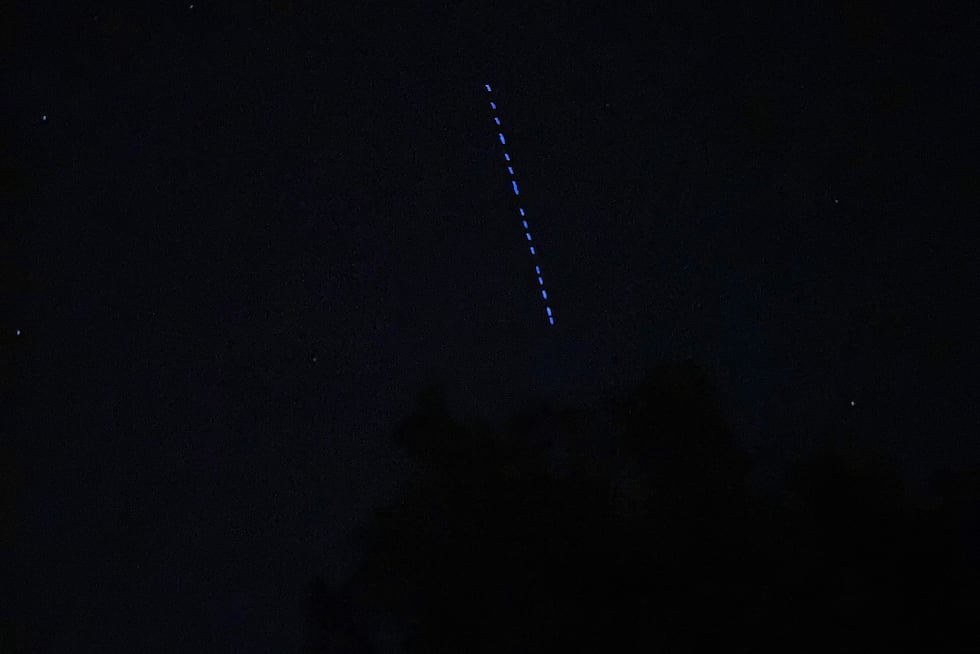In rare sight, northern lights dance across CSRA’s night sky
Extreme geomagnetic storm makes aurora borealis visible as far south as Florida
AUGUSTA, Ga. (WRDW/WAGT) - An unusually strong solar storm is hitting Earth, producing spectacular northern lights across the CSRA and the country at large.
The U.S. Space Weather Prediction Center says a rare “extreme” geomagnetic storm is occurring, causing the northern lights generated by the aurora borealis to penetrate much farther south than normal.
That included Friday night across the CSRA.
The scene was quite impressive across Georgia and South Carolina as you will see in the video above.
Viewers have sent us hundreds of photos of the rare sight. Take a look:
The Space Weather Prediction Center ranks geomagnetic storms on a scale from G-1 (minor) to G-5 (extreme).
Conditions peaked in the G-5 category for a brief time Friday night, causing the northern lights to be visible as far south as Florida.
The center says these conditions were possible again Saturday night. The prime time for viewing Saturday night was expected to be 10 p.m. to around 2 a.m.
The solar activity will be especially high on Sunday, so another show on Sunday night is possible, too.
At Lake Thurmond, hundreds of people showed up at the dam and overlook on Saturday night for a chance to see the lights. While they were waiting, SpaceX’s Starlink satellites made an appearance across the sky.
The solar storm is affecting the satellites, which provide internet service. CEO Elon Musk wrote on X that its satellites were “under a lot of pressure, but holding up so far.”

To track this weekend’s solar storm and aurora borealis conditions, be sure to bookmark this page for the latest observations from the Space Weather Prediction Center.
“That’s really the gift from space weather — the aurora,” said Rob Steenburgh, a scientist with NOAA’s Space Weather Prediction Center.
He and his colleagues said the best aurora views may come from phone cameras, which are better at capturing light than the naked eye.
Snap a picture of the sky and “there might be actually a nice little treat there for you,” said Mike Bettwy, operations chief for the center.
The most intense solar storm in recorded history was in 1859. It prompted auroras in Central America and possibly even Hawaii.
This solar storm poses a risk for high-voltage transmission lines for power grids, not the electrical lines ordinarily found in people’s homes, NOAA space weather forecaster Shawn Dahl told reporters. Satellites also could be affected, which in turn could disrupt navigation and communication services here on Earth.
An extreme geomagnetic storm in 2003, for example, took out power in Sweden and damaged power transformers in South Africa.
Even when the storm is over, signals between GPS satellites and ground receivers could be scrambled or lost, according to experts. But there are so many navigation satellites that any outages should not last long, Steenburgh noted.
The sun has produced strong solar flares since Wednesday, resulting in at least seven outbursts of plasma. Each eruption, known as a coronal mass ejection, can contain billions of tons of plasma and magnetic field from the sun’s outer atmosphere, or corona.
The flares seem to be associated with a sunspot that’s 16 times the diameter of Earth, NOAA said. It is all part of the solar activity ramping up as the sun approaches the peak of its 11-year cycle.
The Associated Press contributed to this report.
Copyright 2024 WRDW/WAGT. All rights reserved.















